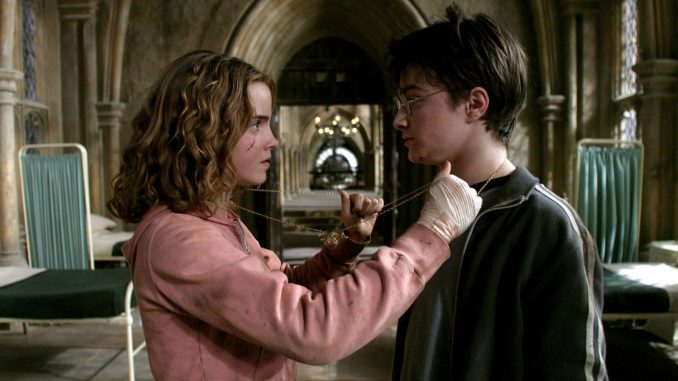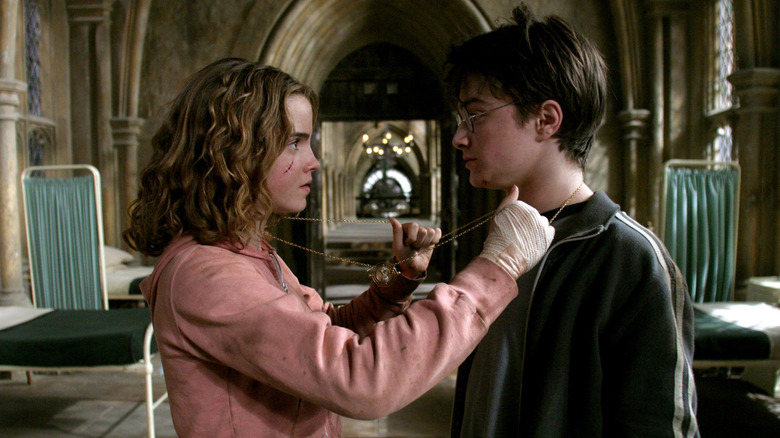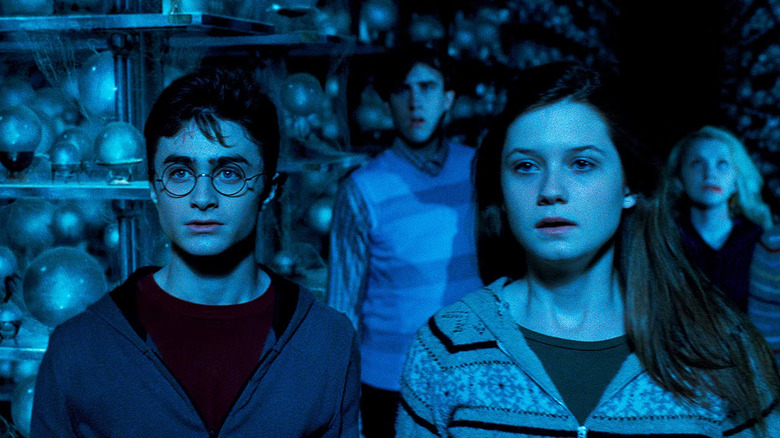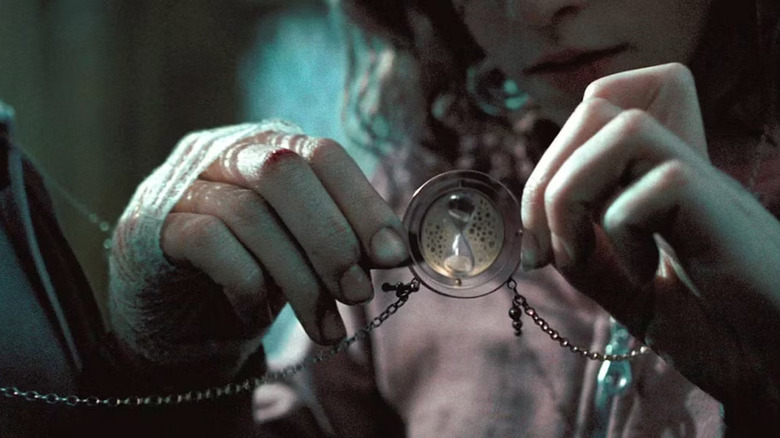
One of the best moments in the entire “Harry Potter” franchise is when Professor Dumbledore (Michael Gambon) lets Hermione (Emma Watson) use her time-turner in “Prisoner of Azkaban.” That’s the moment where the movie, which seemed to be winding down on a bummer note, suddenly sprung into a second life. Hermione and Harry (Daniel Radcliffe) run throughout the Hogwarts grounds, quietly fixing events so that it all works out in their favor. What’s extra cool is that the time travel rules are consistent here; Harry and Hermione don’t mess with anything in a way that changes what their past selves experienced, so there are no bootstrap paradoxes to be concerned about.
There is one clear narrative problem left over, however, and that’s the very existence of the time-turner. Now that the audience knows time travel is possible, author J.K. Rowling was forced to explain why anything bad is even allowed to happen in the wizarding world at all. When trying to figure out who put Harry’s name in the Goblet of Fire, why doesn’t someone go back in time and hide in the room at night? When Voldemort kills Cedric, why doesn’t anyone go back in time and intervene?
There were a lot of explanations Rowling could’ve gone with. She could’ve explicitly established that time-turners can’t be used to undo things its users know already happened, which means that Harry and Hermione’s journey in “Azkaban” made for unique circumstances that can rarely be repeated. Or she could’ve used the apparent plot hole as an opportunity for more social commentary; perhaps she could’ve answered the Cedric question by saying that time-turners can only go back 24 hours, and the bureaucratic process of loaning out a time-turner takes longer than 24 hours.
Maybe that sounds like too silly an explanation, but there are far dumber things the Ministry of Magic has done throughout the books, and the explanation would fit well with the characterization of useless Minister Cornelius Fudge throughout “Goblet of Fire” and “Order of the Phoenix.” Most notably, that explanation would certainly be less silly than what Rowling actually came up with.
How J.K. Rowling did away with time-turners in ‘Order of the Phoenix’
In the follow-up book to “Prisoner of Azkaban,” the characters never really mention the time-turners at all. Hermione, who used the time-turner to go to extra classes in the previous book, returns here to a regular straight-forward class schedule and never once seems to miss the days where she could bend the fourth dimension to her will. This is pretty reasonable, actually — Hermione in the “Prisoner of Azkaban” book was going through a bad time — but it still seems weird that she never mentions it again.
But even if the “Harry Potter” characters seemed to have amnesia about that particular plot device, the fans sure didn’t, so in the next book, Rowling tried to put all the “Why don’t they just…?” questions to rest. “Order of the Phoenix” features a big climactic wizard battle in the restricted halls of the Ministry of Magic. During the fight, Neville casts a spell that accidentally hits a cabinet with all of Britain’s time-turners on it. (Yes, they’re all apparently in that one spot.) The time-turners fall over and accidentally trap themselves into a perpetual time loop that renders them unusable. Here’s the passage where it happens in the book:
“Neville took aim again and shouted: ‘STUPEFY!’ The jet of red light flew right over the Death Eaters shoulder and hit a glass-fronted cabinet on the wall full of variously shaped hour-glasses; the cabinet fell to the floor and burst apart, glass flying everywhere, sprang back up on to the wall, fully mended, then fell down again, and shattered.”
In the movie version, the time-turners simply fall to the ground and break, alongside a whole bunch of other stuff. This happens after Ginny, not Neville, accidentally knocks everything over. I prefer this version of events, because it sidesteps the questions about the time-turners by introducing an even bigger question: Just how much did this one spell cost the Ministry in damages? Did the Ministry send Ginny (or Harry, or Dumbledore) a giant bill for it afterward?
How Rowling brought back time turners (sort of) in ‘The Cursed Child’
Just when we thought the time-turners were out, Rowling pulled them back in. In the 2016 spinoff play “Harry Potter and the Cursed Child,” which was written by Jack Thorne with Rowling’s collaboration, time-turners were reintroduced to the wizarding world. Theodore Notte, a minor Slytherin character from the main series who went on to work for Lucius Malfoy, created a time-turner that allowed Harry’s son Albus (and Albus’s friend Scorpius) to go back in time and stop Cedric Diggory’s death.
The decision turns out to be a total disaster, and the characters have to reverse it, which serves as another answer of sorts for all the fandom complaints about the lack of time-turners post-“Azkaban.” If you didn’t like the answer about the turners being destroyed, then perhaps you’d prefer the argument that using a time-turner would’ve backfired anyway. Of course, whether “The Cursed Child” even counts as “Harry Potter” canon is still up for debate, so you can make of these revelations whatever you wish.
My main takeaway from all this confusion is that time travel is a very tricky element to suddenly introduce into any series, and it’s no surprise Rowling struggled with how to handle it. As she explained in a 2007 interview about the subject, “The time-turner was a very difficult invention for me, because it created as many problems as it solved.”




Leave a Reply